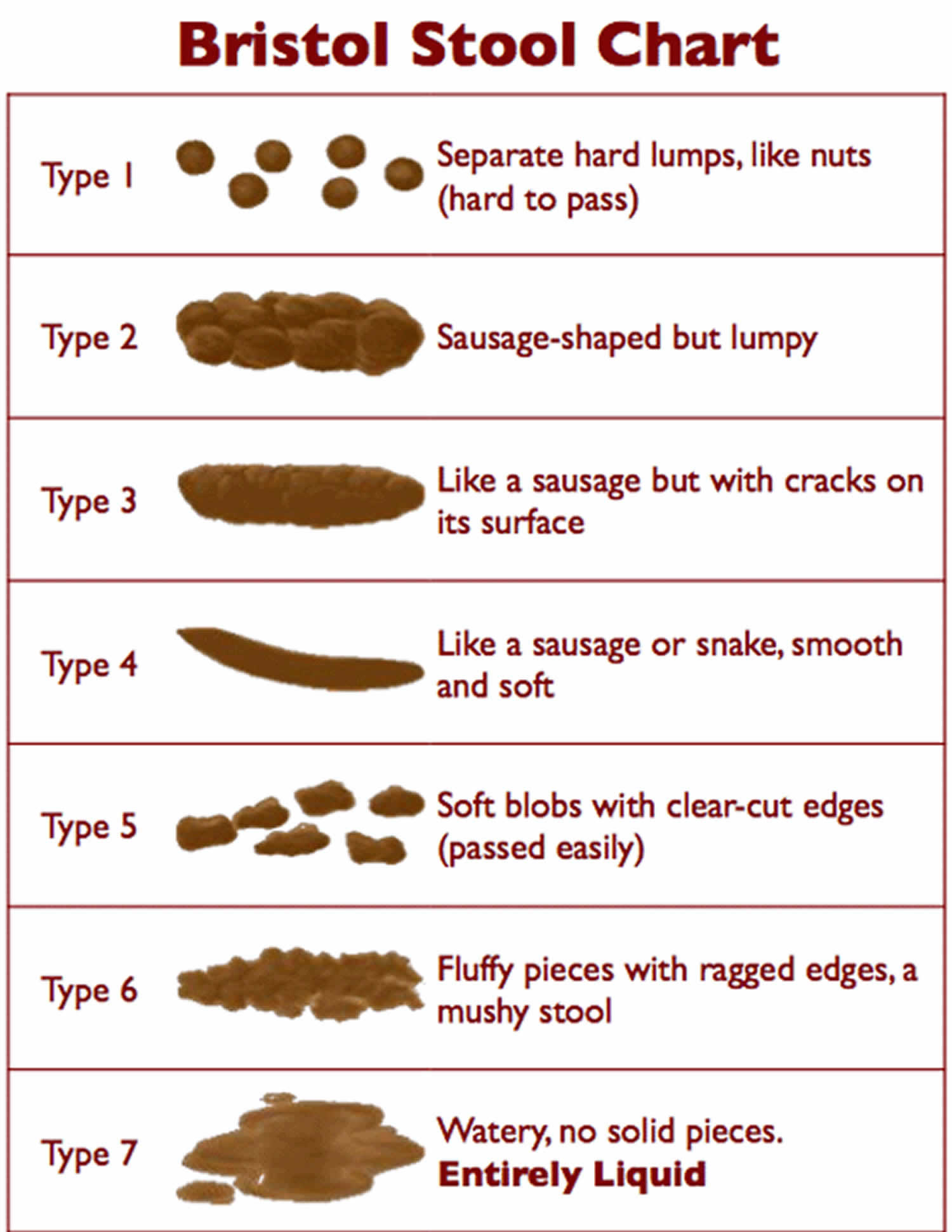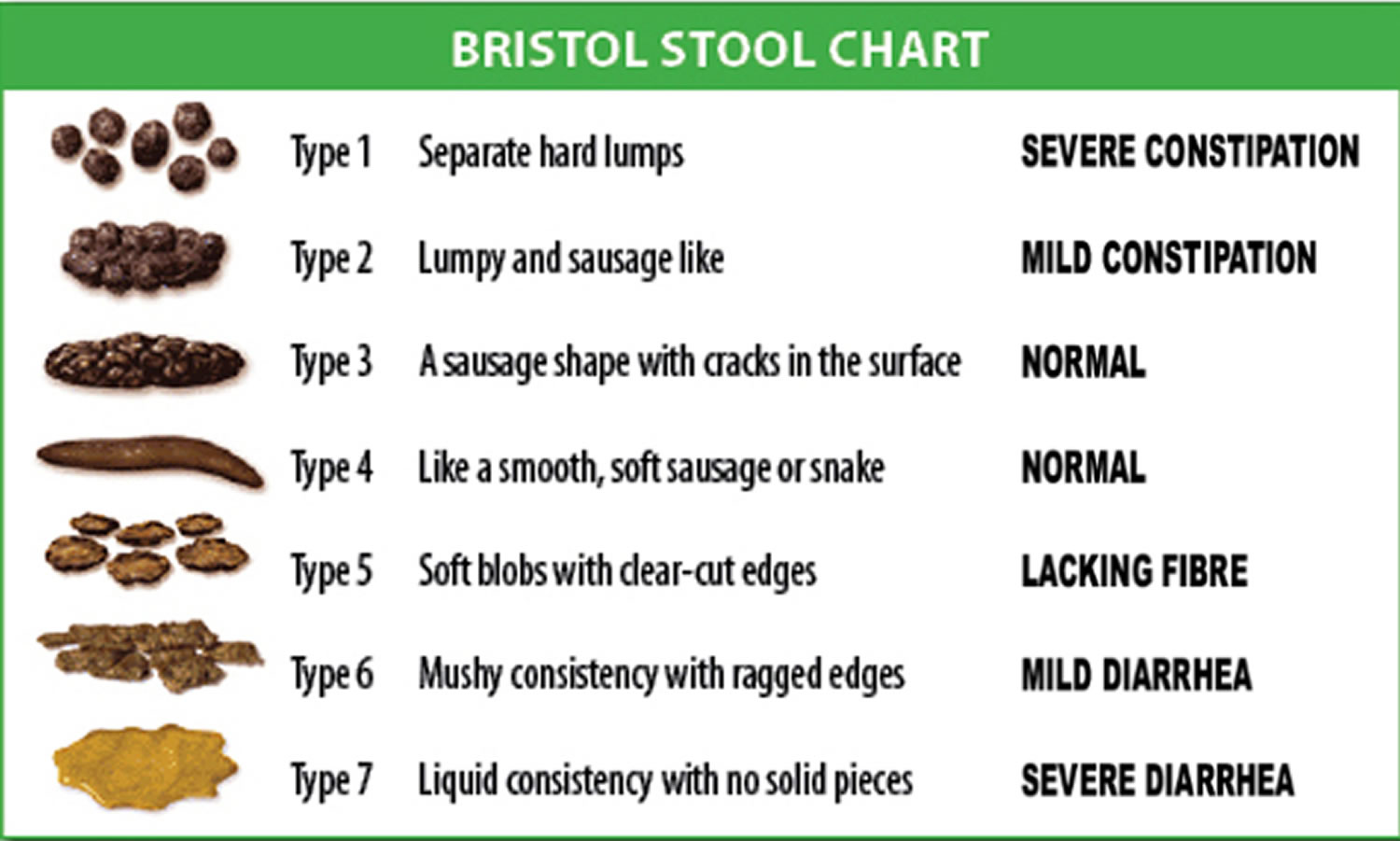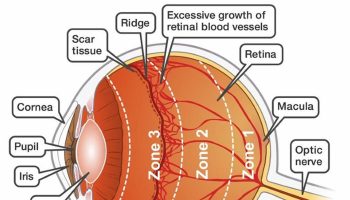Bristol stool chart
The Bristol Stool Chart or Bristol Stool Scale is a diagnostic medical tool designed to classify human stools (poop) into seven categories. Bristol stool chart was developed at the Bristol Royal Infirmary in England as a clinical assessment tool in 1997 1 and is widely used as a research tool to evaluate the effectiveness of treatments for various diseases of the bowel, as well as a clinical communication aid; including being part of the diagnostic triad for irritable bowel syndrome (IBS) 2. Patients with irritable bowel syndrome (IBS) with predominant constipation (IBS-C) have >25% of their bowel movements associated with Bristol stool scale 1 or 2, while those with IBS with predominant diarrhea (IBS-D) have >25% of their bowel movements associated with Bristol stool scale 6 or 7. Those with the mixed subtype of alternating constipation and diarrhea (IBS with mixed bowel habits (IBS-M)) have >25% of their bowel movements associated with Bristol stool scale 1 or 2 and >25% of their bowel movements associated with Bristol stool scale 6 or 7 3.
The Bristol stool chart is also a convenient way for patients to describe their bowel habits, and is routinely used in clinical trials 3.
The type of stool or poop depends on the time it spends in the colon. After you pass stools, what you see in the toilet bowl is basically the result of your diet, fluids, medications and lifestyle. You can use the Bristol Stool Chart to check what your stools are telling you.
The Bristol Stool Chart shows seven categories of stool, which are noted below 1:
- Type 1: Separate hard lumps, like nuts (hard to pass)
- Type 2: Sausage-shaped, but lumpy
- Type 3: Like a sausage but with cracks on its surface
- Type 4: Like a sausage or snake, smooth and soft
- Type 5: Soft blobs with clear cut edges (passed easily)
- Type 6: Fluffy pieces with ragged edges, a mushy stool
- Type 7: Watery, no solid pieces, entirely liquid
Every person will have different bowel habits, but the important thing is that your stools are soft and easy to pass – like types 3 and 4 below 3.
- Type 1–2 indicate constipation,
- Type 3–4 are ideal stools as they are easier to pass,
- Type 5–7 may indicate diarrhea and urgency.
Make sure to speak with your doctor if you think you have constipation or diarrhea and urgency. Some treatment options include:
- Using a laxative;
- A healthy diet containing plenty of different fibre rich foods;
- Drinking lots of fluids;
- Incorporating exercise to keep bowels healthy and regular.
What are the signs of a healthy bowel?
Being ‘regular’ is a way of describing good bowel habits or normal bowel function. We often talk about our bowels being regular but this is often misunderstood as meaning that you go to the toilet to pass faeces every day. It’s common for people to empty their bowel once a day, although it’s still normal to be more or less often. Being regular really means that soft yet well-formed bowel motions are easily passed and that this happens anywhere from 1–3 times a day to 3 times a week.
The bowel usually wants to empty about 30 minutes after a meal (commonly breakfast), but this can vary from person to person.
Good bowel function for adults
There’s more to good bowel function than just being regular. For example, you should be able to:
- hold on for a short time after you feel the first urge to go to the toilet – this allows time to get there and remove clothing without any accidental loss of faeces
- pass a bowel motion within about a minute of sitting down on the toilet
- pass a bowel motion easily and without pain – ideally, you shouldn’t be straining on the toilet or struggling to pass a bowel motion which is hard and dry, and
- completely empty your bowel when you pass a motion – you don’t have to go back to the toilet soon after, to pass more.
People who pass bowel motions at the wrong time or in the wrong place may be experiencing poor bowel control, or faecal incontinence. They may also pass wind when they don’t want to.
Poor bowel control is more common than you may think – about one in 20 people experience poor bowel control. It’s often not talked about, but both men and women can have poor bowel control. It’s more common as you get older, but young people can also have poor bowel control. Sometimes, people with poor bowel control also have poor bladder control and may leak urine.
Good bowel function for children
Children usually develop the ability to be toilet trained by about three years of age. ‘Soiling’ is when the bowels are emptied in places other than the toilet. Even after a child is toilet trained, there may be occasional accidents with soiling (poo) in your child’s underwear.
If a child is unable to be toilet trained or has regular poo accidents after the age of three to four years, then they should be medically assessed. If a child has been toilet trained and at a later stage starts to soil, this also needs medical assessment.
How many children get soiling?
About 1-3% of children can have this problem and some of them may have wetting as well. It is more common in boys.
Soiling may vary from a ‘skid mark’ to larger amounts that need to be removed from underwear before it can be washed.
Why do children soil?
In almost all cases soiling happens because the large bowel is not emptying properly and the child is constipated. Constipation is very common and occurs at some time in up to 25% of children. If it is not recognized and treated, bowel actions may become harder and less frequent. Over time, stretching of the bowel makes it less sensitive, so the child may not feel when poo needs to come out and therefore has an accident. It is quite possible that there is hard poo inside the bowel, but the soiling is soft runny poo leaking around the hard mass, and so you don’t realize that constipation is the underlying problem.
- Stool form scale as a useful guide to intestinal transit time. Lewis SJ, Heaton KW. Scand J Gastroenterol. 1997 Sep; 32(9):920-4.[↩][↩]
- National Collaborating Centre for Nursing and Supportive Care (UK). Irritable Bowel Syndrome in Adults: Diagnosis and Management of Irritable Bowel Syndrome in Primary Care [Internet]. London: Royal College of Nursing (UK); 2008 Feb. (NICE Clinical Guidelines, No. 61.) Available from: https://www.ncbi.nlm.nih.gov/books/NBK51953[↩]
- Lacy BE, Patel NK. Rome Criteria and a Diagnostic Approach to Irritable Bowel Syndrome. J Clin Med. 2017;6(11):99. Published 2017 Oct 26. doi:10.3390/jcm6110099 https://www.ncbi.nlm.nih.gov/pmc/articles/PMC5704116[↩][↩][↩]






